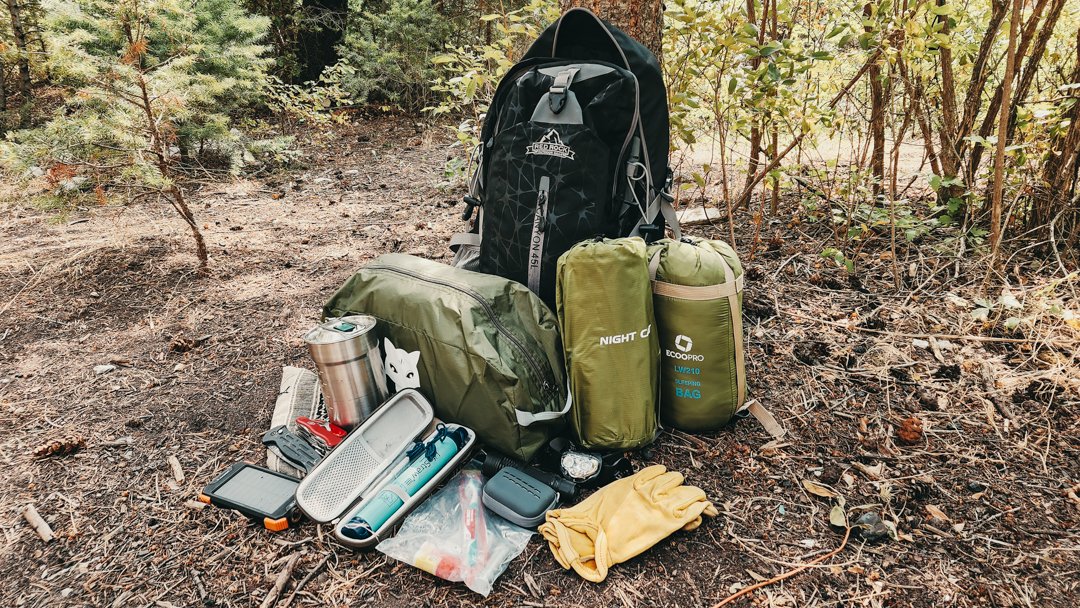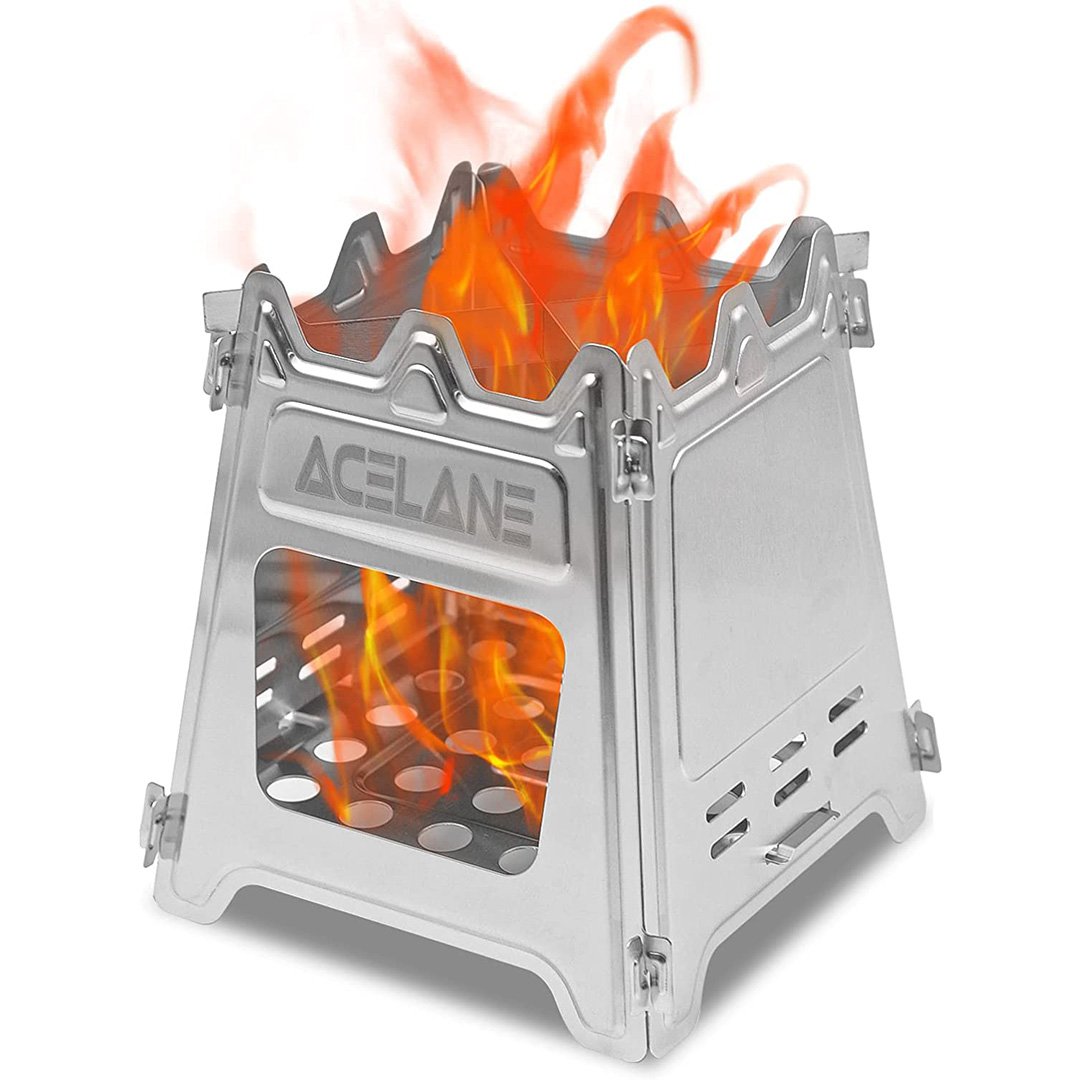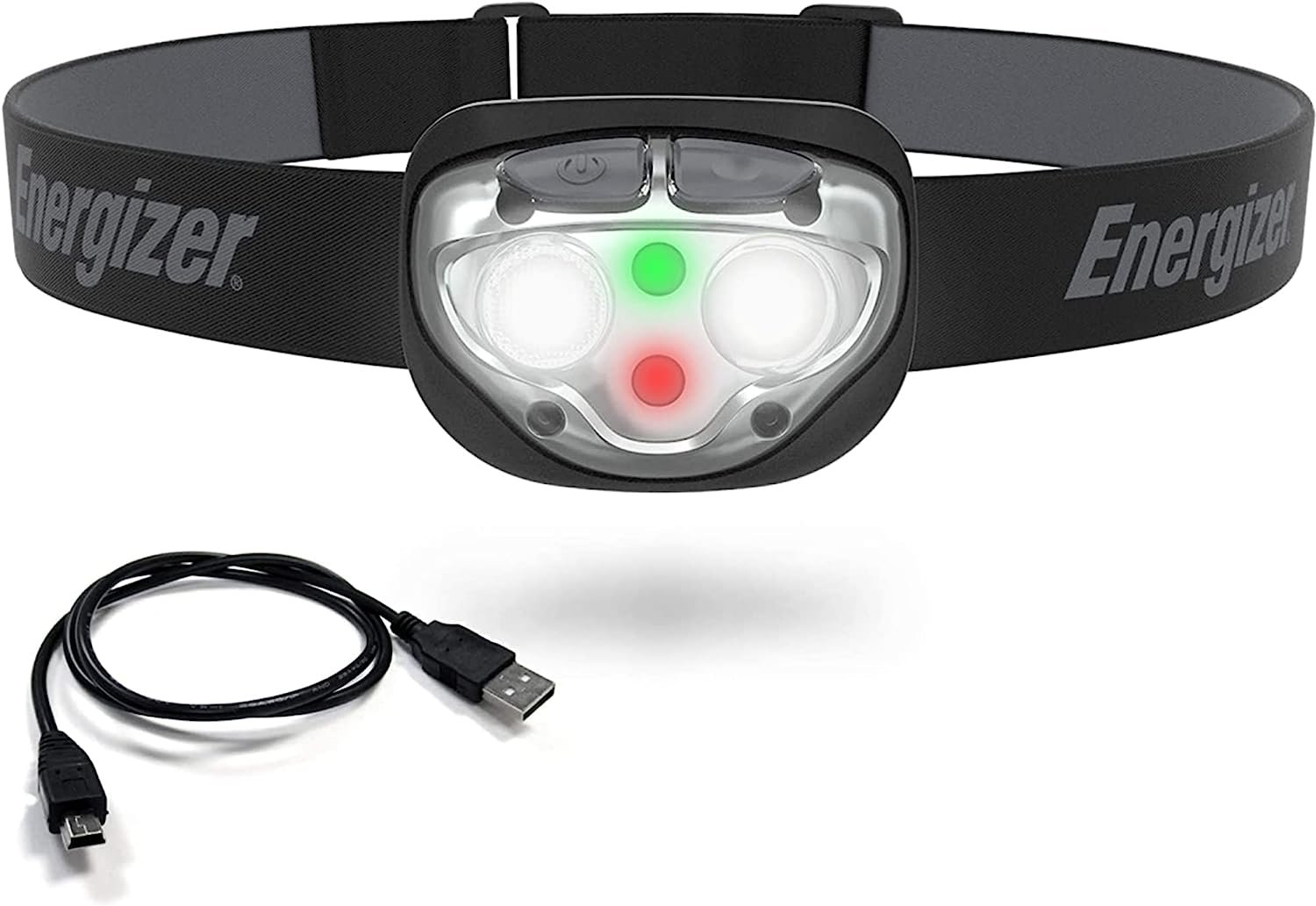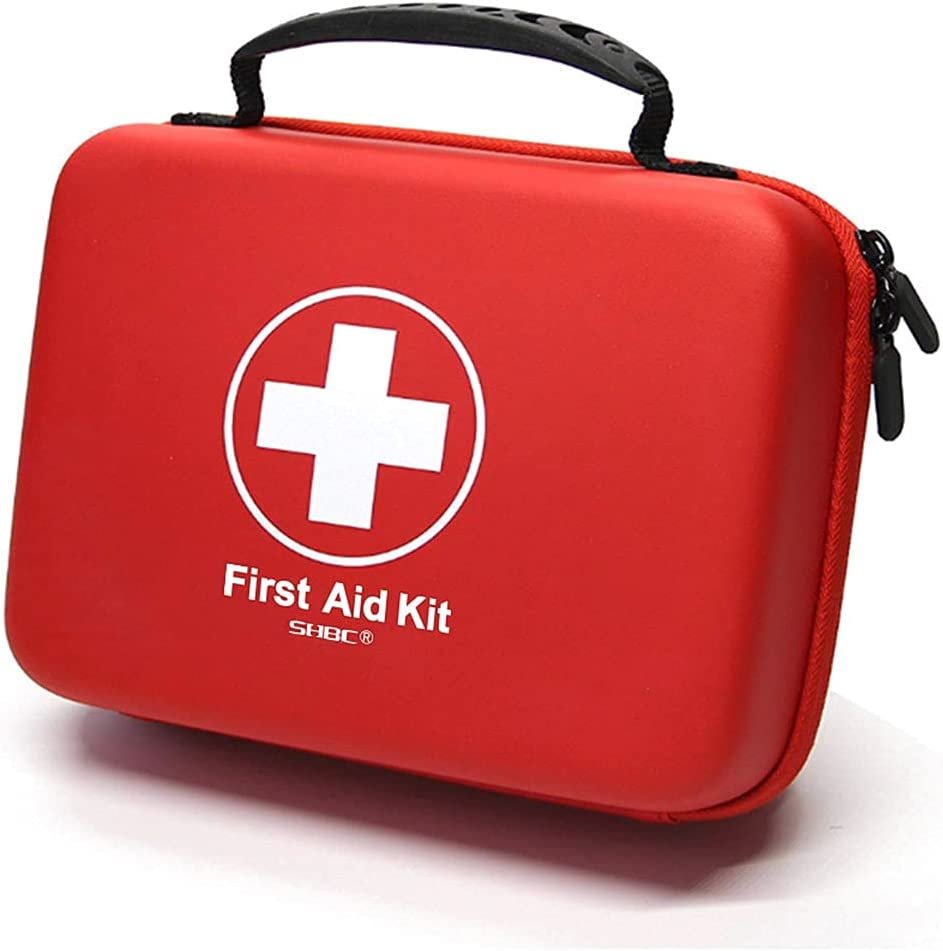Backpacking Gear List
Backpacking is a great way to get out and enjoy nature. You can explore new places, see wildlife, enjoy some solitude, and even practice some great survival skills or land navigation. However, backpacking takes some planning and preparation. Here are some essential backpacking gear items that I keep in my pack, and you may consider bringing along on your next trip. (note: All the gear on this list I own, and have used or are currently using in my backpacking bags)
My Backpacking & Hiking Gear List
Backpack
It all starts with a good pack! The backpack should be comfortable to wear and allow you to carry a variety of gear. There are many different styles of backpacks available, so choose one that works best for your needs. Backpacks come in many sizes and styles depending on what you need them for. If you plan on hiking long distances over rough terrain, consider buying a larger backpack with plenty of pockets and compartments for easy organization of your gear. I try to keep things as lightweight and compact as possible so my preferred bag comes in on the smaller side of medium. I also prefer a more standard or low key appearance as opposed to the bulkier off grid/ trekking style bags, or tactical bugout bags. The Osprey Atmos Backpack is a popular option packed with great features!
Tarp
I like to keep a compact camping tarp in my backpacking kit. A lightweight camping tarp can be used as an alternative to expensive tents, with the benefit of being cheaper, lighter weight and more compact. The tarp can be pitched using trekking poles or tied between trees. It can also be used to create a makeshift shelter out of vegetation. Tarps can also provide nice provide protection from rain and sun when used as an outer shell in conjunction with other layers of clothing and gear such as rain pants, gaiters and jackets. The tarp can also provide some protection from wind but they are generally not designed to withstand heavy winds without additional support (e.g., stakes or guy lines).
Tent
If you have the room, a tent is a nice step up from a tarp for shelter. Backpacking tents act as a shelter for you during your trip and protect you and your gear from the elements. Most tents today pack down very small and can be deployed pretty quickly and easily! I like this single person tent from Night Cat. I can deploy this tent in a couple minutes with minimal effort, and when packed down, it takes up very little room in my backpack! Another great option from Night Cat is the Hammock Tent. This setup takes up more room but can be used as a single person tent in the absence of trees or suspended to get you off the ground when feasible which is also nice for uneven terrain. For reference, I can fit this setup with the sleeping pad in my 45L backpack (visible in the photo above), so it’s not overly bulky, but certainly takes up more space than the aforementioned tent.
Sleeping Bag
A sleeping bag is another important item that should be included in any backpacking kit because it provides warmth at night when temperatures drop below freezing or become too cold for comfort. Most people prefer mummy-style sleeping bags because they offer more warmth than traditional rectangular ones do. Make sure the sleeping bag fits snugly around your body so you don't have any gaps where cold air can sneak through during the night when temperatures drop unexpectedly low. Another consideration is the temperature rating of the sleeping bag. If you enjoy backpacking year round or in all seasons, you may want to consider more than one sleeping bag and switching them out based on the climate of the year. The lower the temperature rating, the bulkier the sleeping bag typically is. For a good summer and all around backpacking sleeping bag, I like these 20° Lightweight Sleeping Bags.
Water
Water is essential to survival. When backpacking, it's important to carry enough water to stay hydrated. Dehydration is a serious problem that can lead to heat exhaustion, heat stroke, and even death. How much water you'll need depends on the length of your trip and the weather conditions. You need at least two quarts (1.9 liters) per day — more if you're hiking in hot weather or at high altitudes. Most backpackers carry their supply of water in a hydration reservoir. If you choose this route, be sure to bring extra water containers for treating water along the way and for refilling from streams and other sources of fresh water as needed. I like these flexible water bottles. They are a great way to carry water, but collapse down and save space as they are used, or when not needed. They are also flexible allowing them to contour as need to fit spaces in your bag of gear. These bottles work great as a standalone means of carrying your water, but also in tandem with a hydration bladder if you have one with your backpack!
Life Straw
You may not be able to carry enough water for your whole hike, or worse yet, if you get stranded for some reason, so planning ahead and having a means to purify water on the go can be essential. The LifeStraw water purifier is a personal, portable water filter that makes contaminated or suspect water safe to drink. The filters are intended for use in developing countries, for emergency preparedness, and for outdoor activities where water may be unsafe to drink. They have been used by humanitarian organizations such as the United Nations World Food Programme and the American Red Cross and are popular among backpackers, hikers, campers and other outdoors enthusiasts with the need to filter contaminated water. LifeStraw water purifiers are a great way to get water from a stream, river or lake. The LifeStraw is made from high quality materials and is easy to use. It will remove 99.9999% of bacteria and 99.9% of parasites from the water you drink, making it safe for consumption. The LifeStraw filter is extremely handy to and worth the space to tuck into your backpacking gear bag!
Fire Starters
When backpacking, it's important to be prepared for any situation. That includes being able to start a fire. Fire is one of your most important resources. It can keep you warm, cook food and purify water, keeps predators away, provide light and can even be used to signal for help if you need it. There are many traditional ways to start fire of course, most of which require some level of skill or patience. Fortunately, there are several alternatives to traditional fire starters that make it much easier to start a fire without having to carry around extra weight in your pack. My two favorite fire starters to keep with my backpacking gear are the Water Proof Arc Lighter and the Blast Match.
Stove
Backpacking stoves are great to have for backpacking because they allow you to setup a fire quickly for boiling water or cooking. A good backpacking stove is compact, lightweight and easy to use. I like these folding portable camp stoves. They are small enough to fit in your backpack but powerful enough to cook all your meals. The folding portable camp stove doesn’t require you to carry any propane or fuel. The walled design contains the flames and sparks well while allowing ventilation for an efficient burn that keep s the smoke down, and more value for your fuel.
Mess Kit
The best backpacking mess kits will have everything you need to cook a meal while out on the trail. These kits come in all shapes and sizes, with some being very lightweight and others being extremely durable. Most of these kits include a pot, skillet, cup/bowl, utensils and possibly even a cutting board. When buying a backpacking mess kit, it's important to consider how many people will use it, how much space you have in your backpack, and even what kind of activities or food you may plan while out on the trails. This backpacking cook set includes everything you would need to cook a small meal or even boil water including a small propane burner and eating utensils. For a slight upgrade, I like the 4 in 1 folding camp utensils which I personally think are a bit more comfortable to hold and store a little better!
Multi Tool
There are many different versions of Multitools today. Some knives have more tools than others, but all of them have at least one folding blade. Most models also include a corkscrew, awl (a kind of small screwdriver), tweezers, toothpick/hook, a saw blade and sometimes even a magnifying glass/flashlight combo tool as well.
I currently carry the Victorinox Hiker, a close variant of the original “Swiss Army Knife”. The Victorinox Hiker is a handy and portable lightweight multitool that can be used for a variety of backpacking and hiking task such as; cutting rope, opening cans and bottles, tightening screws, prying open boxes, and more. The knife has been around since the 19th century and has been popular with hikers, campers, and other outdoor enthusiasts ever since.
Knife
A knife is one of the most important tools you can carry on a backpacking trip. It is used for everything from cutting food to building shelters, starting fires and much more. A knife can also be used as a self-defense weapon if need be. For backpacking, camping, or hiking, I recommend considering a high quality knife that is can handle some rugged use.
There are three main types of knives you can consider for backpacking: folding, fixed blade and multi-tools as mentioned above. With our multitool already checked off our list, and fixed blades being a bit to bulky for our backpacking needs, I tend to lean toward a solid folding knife. Folding knives are compact, lightweight and easy to carry in your pocket and can be opened quickly with one hand.
I recommend the Benchmade Griptilian Knife. Benchmade has been a trusted name associated with high quality for a long time, and with products like the Griptilian its easy to see why. The Griptilian is the perfect size and fits the hands comfortably. Its easy to flip out with one hand, and operates smoothly. Its solid construction is aligned with all other Benchmade products and can handle the ruggedness of the back country. Benchmade knives are also known for holding edges well and being easy to maintain.
Headlamp
It goes without saying that illumination is always beneficial. A flashlight or headlamp can extend your effective operational hours by a lot. Todays options are endless as battery and LED technology has taken some serious leaps forward the past few years. I like to keep one of each with my backpacking setup for redundancy. If the adventure calls for some cave exploring or similar, then I up that to two of each. These items are small and lightweight, and its better to have them working and not need them, then need them and not have them. I find that I use the headlamps more frequently as when I need illumination I am generally doing something that requires my hands to be free and not holding a light. I like the Rechargeable LED Headlamps from Energizer. The battery life is great, it offers different brightness settings, as well as a green and red illumination. I use the red option when doing astrophotography or other night time activities to see what I am doing without disrupting or disorienting my vision. Its also valuable if you are trying to keep a low profile and not draw attention to your location. Reciprocally, the Energizer headlamp offers a strobe feature which can be an effective means of signaling in the event of an emergency.
IFAK
First aid kits are an essential piece of gear for any outdoor activity. Whether you're backpacking through the wilderness or hiking along a well-worn trail, a first aid kit can come in handy at any time. I keep these Personal First Aid Kits close and at the ready. I have one in my Backpacking gear, as well as most of my adventure gear such as my adventure van, Paramotor Gear, Shooting gear, drone bags, GoPro bag, Kayak, Winter sports gear, Prospecting Tote, and more!
Towel
Camping towels are one of those things that you really don't think about when you are packing for a camping trip, but they can be a huge addition. They will help you stay clean, dry and healthy when you are out in the wilderness. Camping towels are great for bathing, drying yourself off after swimming or sweating during exercise, or even cleaning up spills and more. A good towel is lightweight and compact so that it takes up little space in your backpack or gear bag. When folded up properly, it should fit comfortably into your hand or even into your pocket! I am huge fan of these compact microfiber travel towels. I keep two in my Backpacking gear bag, and even have a couple staged with my travel luggage and carry on bag.
Shemagh
The shemagh is a traditional Middle Eastern headscarf worn by men, women and children. The scarf is made of cotton or wool and has many uses. It can be used for protection from the sun's rays, keeping the wearer warm in cold weather and as an improvised dust mask in dusty conditions. It can be worn around the neck like a scarf or tied around the head like a bandana, which makes it great for camping trips or other outdoor activities where you might want protection from the elements while still being able to see clearly. It's lightweight, breathable and water resistant - perfect for temperatures that range from freezing cold to scorching hot! Shemaghs can also make a great sling and swathe in the event of an injury, or can even be used for water collection. The versatility and value of a shemagh is tough to beat and makes them a must have item in your backpack.
Final Thoughts
With the right gear and equipment, adventures into the backcountry can be safer and a lot more enjoyable. This is the essential gear I currently recommend for backpacking and exploring new places and should enhance the experience of your next adventure!





















